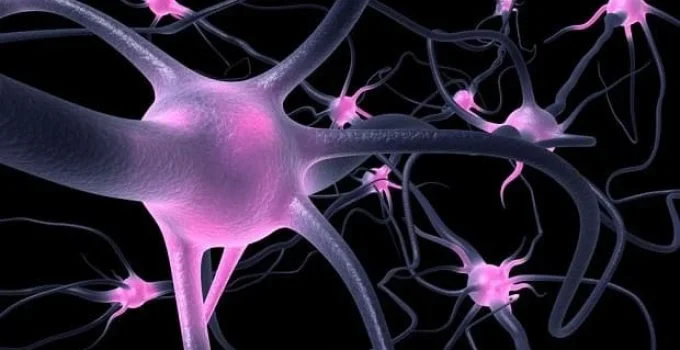What Are Neurons?
Every time you blink, move, think, or feel something, millions of tiny messengers in your body spring into action. These messengers are called neurons, and they’re the main cells of the nervous system. But what exactly are neurons? And how do they send messages so fast?
Neurons are special cells that carry information through electrical and chemical signals. Without them, your body wouldn’t be able to react to anything or even keep you alive! Let’s take a closer look at what neurons are made of, how they work, and why they’re so important.
🔍Dive Deeper
- What Is a Neuron?
- ⚙️ The Parts of a Neuron
- 📡 How Neurons Send Messages
- 🔁 Types of Neurons and Their Jobs
- 📊 Amazing Neuron Facts
- 🎯 Final Thoughts
- 📚 References
What Is a Neuron?
A neuron is a cell that sends and receives messages in the body. It’s kind of like a telephone line that connects your brain to the rest of your body.
Neurons belong to the nervous system, which includes your brain, spinal cord, and all the nerves that spread throughout your body. There are billions of neurons working together to help you sense the world, make decisions, and move.
⚡ The human brain contains around 86 billion neurons [1].
⚙️ The Parts of a Neuron
Each neuron has three main parts, and each plays a different role in sending messages.
| Part of Neuron | Function |
|---|---|
| Dendrites | Receive signals from other neurons |
| Cell Body | Processes the information (contains the nucleus) |
| Axon | Sends the signal to the next neuron |
At the end of the axon is something called the axon terminal, which connects to the dendrites of another neuron or directly to a muscle or gland.
These parts work together to create a system where messages can travel one way, from dendrite to axon.
📡 How Neurons Send Messages
Neurons send signals using both electricity and chemicals.
Step-by-step:
- A signal (called an electrical impulse) starts in the neuron’s cell body.
- It travels down the axon, like electricity moving through a wire.
- When it reaches the end of the axon, it needs to cross a gap called a synapse.
- The neuron releases neurotransmitters (special chemicals) that carry the message across the synapse.
- The next neuron receives the message with its dendrites, and the process starts again!
This system works incredibly fast. In fact:
⚡ Neurons can send messages at speeds up to 250 miles per hour [2]!
🔁 Types of Neurons and Their Jobs
There are three main types of neurons, and each has a unique job:
| Type of Neuron | What It Does | Example |
|---|---|---|
| Sensory Neurons | Carry messages from the body to the brain/spinal cord | Feeling a hot stove |
| Motor Neurons | Carry messages from the brain to the muscles | Moving your hand away |
| Interneurons | Connect neurons to each other inside the brain/spine | Making a decision, processing thoughts |
These neurons form complex networks that allow your body to sense, think, and respond in real time.
📊 Amazing Neuron Facts
🧠 Each neuron can connect to up to 10,000 other neurons, creating trillions of pathways [3].
💡 Neurons use chemicals like dopamine and serotonin to pass along signals and affect mood.
🧬 Neurons don’t touch each other—they always pass signals across a tiny gap.
🔋 The brain’s neurons are so active that it uses about 20% of the body’s total energy, even at rest.
🎯 Final Thoughts
So, what are neurons? Neurons are the tiny power lines of your body, helping you think, move, feel, and even breathe—without you having to think about it. Each neuron plays a vital role in keeping your brain and body connected.
By understanding what neurons are and how they work, you get a better idea of how your nervous system works as a whole. Even though they’re tiny, neurons are the reason you’re able to read this sentence, understand it, and scroll to the next one.
So next time you catch a ball, laugh at a joke, or feel a hug—remember, it’s your neurons making it all happen.
📚 References
- Azevedo, F.A.C. et al. (2009). “Equal numbers of neuronal and nonneuronal cells make the human brain an isometrically scaled-up primate brain.” Journal of Comparative Neurology. https://doi.org/10.1002/cne.21974
- Harvard Medical School. “How Fast Do Nerve Signals Travel?” Harvard Health Publishing. https://www.health.harvard.edu
- National Institute of Neurological Disorders and Stroke. “Brain Basics.” https://www.ninds.nih.gov/health-information/patient-caregiver-education/brain-basics
- KidsHealth. “Nervous System.” Nemours. https://kidshealth.org/en/kids/brain.html
📌Learn More About the Nervous System
- What Organs Are Part of the Nervous System?
- What Are the Functions of the Brain?
- What Are the Parts of the Brain?
- Why Is the Brain So Wrinkly?
- What Are Neurons and How Do They Work?
